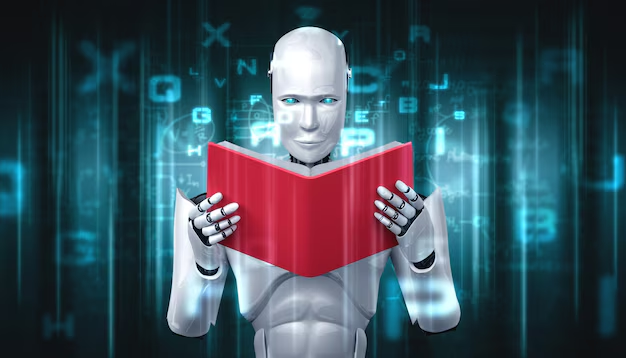The air crackled with a nervous energy, the kind you feel right before a tectonic shift. I remember those early days, squinting at lines of code, the promise of AI shimmering on the horizon like a mirage. We were wrestling with algorithms, trying to coax them to understand, to learn, but something felt…missing. Then, like a sunrise over a darkened landscape, came the neural network. It wasn’t just another algorithm; it was a paradigm shift, a completely new way to approach the very essence of intelligence. Suddenly, the static became symphonic, the noise transformed into a complex, beautiful language.
Think of it: machines that can not only categorize images, but dream new ones, compose music, and even diagnose diseases with uncanny accuracy. We’re not just talking incremental improvements anymore; we’re talking revolution. And it’s not confined to the labs and research papers. Today, these powerful networks are the invisible threads woven into the fabric of our daily lives, from the personalized recommendations that anticipate your desires to the self-driving cars navigating our streets. But are you truly grasping the sheer potential, the colossal implications these networks hold for your business and beyond? Are we prepared for the future they are forging? It’s no longer a question of if neural networks will shape our world, but how, and understanding the nuances is not just a technical advantage—it’s the key to navigating the coming decades. This, my friends, is where our journey begins.
Let’s dive into the swirling vortex that is the Neural Networks market. It’s a landscape shifting faster than a chameleon on a disco ball, and understanding its currents is vital for any company looking to thrive, or even survive. Forget surface-level skimming; we’re going deep, exploring the hidden eddies and powerful tides that are reshaping this domain.

The Rise of the Machines (and the Humans Behind Them)
Positive Trend 1: The Democratization of AI: Once the domain of PhDs and tech behemoths, neural networks are increasingly accessible. Cloud-based platforms like Google’s TensorFlow and Amazon SageMaker are lowering the barrier to entry, practically handing the keys to AI mastery to smaller companies and even individual developers. Imagine a mom-and-pop bakery suddenly able to predict customer preferences with astonishing accuracy – that’s the power of democratization. Think, for example, of Hugging Face, providing pre-trained models and tools that allow anyone to play with AI’s toys.
- Impact: Massive potential for innovation across industries. Smaller players can level the playing field and offer highly specialized AI solutions.
- Analyst Recommendation: Invest in educating your workforce on these accessible platforms. Look for opportunities to partner with startups that are leveraging these tools in creative ways. Don’t be the dinosaur in the room staring blankly at the asteroid of change.
Positive Trend 2: The Specialization of Models: We’re seeing a move away from monolithic, general-purpose models towards highly specialized neural networks tuned for specific tasks, such as medical image analysis, financial fraud detection, or hyper-personalized e-commerce recommendations. Companies like DeepMind Health are proving how deep learning can revolutionize healthcare.
- Impact: Greater efficiency, accuracy, and cost-effectiveness. Businesses can extract more value from their AI investments by focusing on niche applications.
- Analyst Recommendation: Identify specific pain points within your industry and explore tailored neural network solutions. Seek out AI talent with specialized expertise. Don’t just throw a hammer at every problem when a scalpel is needed.
The Dark Side of the AI Moon
Adverse Trend 1: The Ethical Labyrinth: As neural networks become more powerful, the ethical implications are becoming increasingly pressing. Concerns about bias in training data, the potential for job displacement, and the misuse of AI for nefarious purposes cast a shadow over its bright promise. Think of the biases that can creep into facial recognition systems, highlighting the very real dangers.
- Impact: Potential reputational damage, legal and regulatory challenges, and erosion of public trust.
- Analyst Recommendation: Prioritize ethical considerations throughout the development and deployment of neural networks. Invest in tools and techniques to detect and mitigate bias. Engage in open and transparent communication about your AI practices. The AI future is built on trust, not blind ambition.
Adverse Trend 2: The Talent Drought: Despite the democratization of AI tools, there’s a severe shortage of skilled AI professionals. Companies are competing fiercely for top talent, driving up salaries and making it difficult for smaller players to compete. This is the “gold rush” effect, but with a finite amount of gold (and talent!).
- Impact: Slower pace of innovation, inability to capitalize on market opportunities, and potential competitive disadvantage.
- Analyst Recommendation: Invest in internal AI training programs. Explore strategic partnerships with universities and research institutions. Foster a company culture that attracts and retains top talent. Don’t just chase after the talent pool, create your own oasis.
The Path Forward
The neural network market is a wild ride, full of promise and peril. Companies that embrace the positive trends while proactively addressing the adverse ones will not only survive, but thrive. It’s about being agile, ethically responsible, and constantly learning. So, are you ready to embark on this adventure and harness the power of AI, or will you be left behind, staring at the dust of progress? The choice, as always, is yours.
Applications:
Healthcare: Imagine a radiologist, Dr. Aris, his eyes weary from hours spent scrutinizing scans. Now, a neural network, trained on millions of images, acts as his tireless assistant. It highlights anomalies, whispers suggestions, cutting down analysis time from arduous minutes to mere seconds. A once daunting pile of X-rays, now becomes a streamlined workflow, allowing Dr. Aris to focus on patient interaction and complex cases, rather than just hunting for faint shadows. This isn’t about replacing human expertise, it’s about augmenting it, like providing the doctor with an extra, incredibly sharp pair of eyes.
Technology: Picture Sarah, a customer support agent at a bustling tech company, her voice often drowned in the chorus of user complaints. Now, a neural network powered chatbot steps in, its digital ears perked to understand not just keywords, but the nuances of user frustration. It quickly triages common issues, offering tailored solutions instantly, while Sarah focuses on the users requiring more nuanced guidance. The chatbot, initially a novelty, now feels like a seasoned teammate, handling mundane tasks, leaving Sarah to shine where she’s needed the most – empathetic, human problem-solving.
Automotive: Picture a sprawling factory floor, the rhythmic clang of machinery a constant symphony. Here, neural networks are the conductors of precision. They pore over real-time data from sensors on the assembly line, predict potential equipment failures before they occur, and orchestrate maintenance like a maestro. The clanging slows, not to silence, but to the smooth hum of efficient production. The factory floor, once a place of unpredictable breakdowns, becomes a model of proactive, almost sentient operations. This gives plant managers real-time insight, allowing them to schedule maintenance with minimal production loss.
Manufacturing: Visualize a vast warehouse, stacked high with inventory. Neural networks are the invisible stock clerks, tirelessly optimizing storage and shipment. They analyze sales patterns, market trends, and supplier capacity to anticipate demand. The result is a warehouse that flows like a river – product enters, flows through the system, and ships out with uncanny precision. Gone are the days of excess stock gathering dust or missed sales due to lack of inventory. Instead, a responsive, efficient supply chain emerges, breathing life into the business’s logistical arteries.
Strategies:
The Sprint to Scale
Early 2023 saw a flurry of organic growth strategies. Companies focused intensely on refining their existing neural network models. Imagine a team at SynapseAI, furiously training their language model on new datasets. “We need more contextual awareness,” their lead engineer, Sarah, would often say, pushing for enhanced data augmentation techniques, and faster, more efficient training pipelines to improve performance without massively expanding model size. They were optimizing what they had, squeezing out every drop of performance. Another common strategy was investing in explainable AI (XAI). Many teams realized that trust and adoption hinged on users understanding why a neural network made a particular decision. “We can’t just present black boxes; we must show our work,” echoed a product manager at DeepVision, pushing for integration of XAI tools across their diagnostic platforms.
The Merger Maneuvers
As the year progressed, inorganic growth became more prevalent. We saw acquisitions strategically aimed at filling gaps in the technology stack. For example, CognitoTech, specializing in computer vision, acquired SoundWave Analytics, a startup with cutting-edge speech recognition neural networks. “We need a multi-modal approach,” stated CognitoTech’s CEO, “acquiring SoundWave gives us that capability overnight,” highlighting how mergers provided rapid access to new markets and diversified product portfolios. Strategic partnerships also emerged. NeuralForge, a hardware provider, partnered with ModelWorks, a neural network infrastructure company. “They provide the brains; we provide the brawn,” said the NeuralForge VP of Sales, indicating how combining strengths led to the creation of holistic solutions that could tackle complex AI challenges more effectively and rapidly.
The Long-Term Play
Towards late 2023 and early 2024, the focus shifted to longer-term positioning, emphasizing ethical AI practices and building robust, adaptable platforms. Companies started investing heavily in federated learning, allowing neural networks to be trained on decentralized datasets without compromising user privacy. “Privacy-by-design is not just a buzzword; it’s essential for long-term sustainability,” the CTO of SecureMind, a company specializing in data privacy tools, emphasized. Concurrently, there was a push to develop more efficient neural network architectures and model compression techniques. “We need AI that runs anywhere, not just in the data center,” stated an engineer at EdgeAI, focusing on solutions that could be deployed on edge devices with limited resources. This move towards resource efficiency and responsible AI use, signaled a longer-term commitment to sustainable growth and market adoption.

Outlook & Summary
The neural network revolution, as we’ve explored, is far from its final act. Imagine a future, not so distant, where AI isn’t just mimicking human intelligence, but genuinely understanding and innovating. Within the next 5 to 10 years, we’ll likely witness neural networks leaving the lab and entering the wild with even greater impact. Think of personalized medicine fine-tuned to your unique genetic code, climate models that predict with crystal clarity, and creative tools that blur the lines between human and machine artistry. The humdrum task of data pre-processing could become a distant memory as networks learn to interpret chaos. But more profoundly, we’re on the cusp of truly understanding how these black boxes reach their conclusions – a crucial leap for ethical AI development.
This isn’t a mere technical upgrade; it’s a tectonic shift. Machine learning, as a whole, finds its power amplified tenfold by the elegance and flexibility of these deep learning architectures, as if we’ve discovered a master key to unlocking its potential. It’s as if the field was a canvas, previously scattered with simple sketches, and Neural Networks have provided a pallet of infinite possibilities. From image recognition to natural language processing, the entire landscape is being reshaped. This article isn’t just about code and algorithms; it’s a peek into a world where the very fabric of computation is being redefined.
As we stand at this precipice, it begs the question: how will you harness the surging power of neural networks to sculpt the future of your business, your field, or even the world around you?


